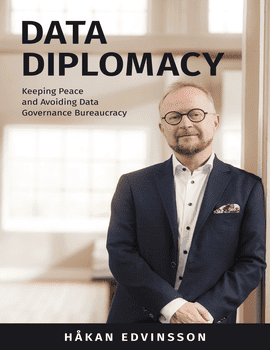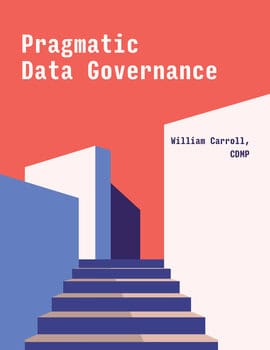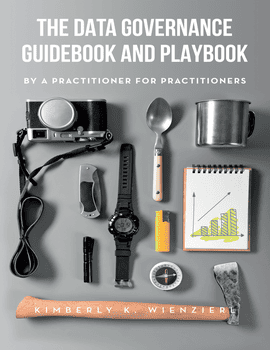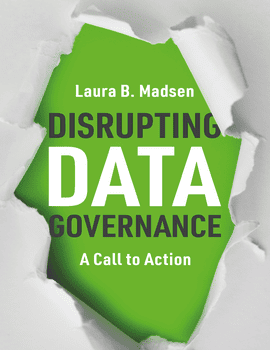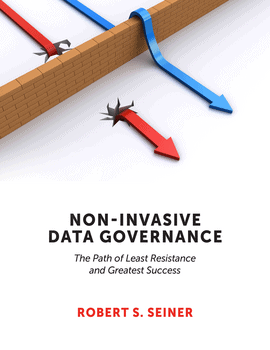Data Diplomacy
Data Diplomacy: Keeping Peace and Avoiding Data Governance Bureaucracy, by Håkan Edvinsson
Successful data governance requires replacing governance with diplomacy. This book is your guide to applying a lean and friendly yet proven approach to data governance and data design by leveraging your existing workforce, and allowing these data workers to create and sustain a data smart organization.
Topics
Chapter 1: The concept of Data Diplomacy
Why do we need diplomacy in data governance?
Everybody is a data worker
What does diplomacy mean in data governance?
Who is a data diplomat?
How is this done?
Acting in a diplomatic way
Examples of diplomatic behavior
Data governance propulsion using gravity
Whitewashing discrepancies
Almost right data
How the truth in the data turned a company
How Matt unknowingly established data governance
Letting it sink in
Chapter 2: Running data governance in four arenas
Meeting expectations for managing data
Working with the entirety
Staffing
Proactivity
Decision-making
Growing
Data governance management system
Enterprise data model
Working with data design – change
A successful business data design
Using a business data model
Getting the proper representation
Designing different kinds of data
Working with data content – operational
Data content real-life cases
Data content management principles
Working with data processing – IT
“How hard can it be?”
Benefits for IT processes
A diplomatic example
Introducing data diplomacy in the IT arena
Making agile methods diplomatic
Chapter 3: Organizing the four data governance arenas
Roles overview
Organizing the Data Governance Entirety arena
The role of data governance lead
Data governance lead funding
The role of the enterprise data architect
The Diplomatic Enterprise Data Architecture
Organizing the Data Design arena
The entity manager – finding the hero
Entity accountable
Business domain data architects
How to cooperate in the Business Data Design arena
Making business data design decisions
Organizing the Data Content arena
Avoiding “stewards”
Examples of organizing customer data and product data
Business processes completed with master data
Making decisions about data
Organizing the Data Processing arena
Putting the “I” into IT
Project portfolio planning
Project initiation
Concept and feasibility studies
Requirement work
In-house built systems
Systems acquisitions
Pre-launch work
Maintenance work
Chapter 4: The diplomat’s toolbox
Initiating data governance in a diplomatic way
Gather “the Knowledgeable individuals”
Reveal the situation
Start making results
Be the change
Setting up formal data governance
Diplomacy in action
Organizing a business data modeling workshop
The diplomatic facilitator’s preparations
Workshop execution
Data modeling workshop pitfalls
Diplomatic workshop hints
Fact-based business requirements
Advantages
A real-world experience
Data model storytelling
Model story contents
A data model story example
Well invested model storytelling efforts
The five running guys
“The time has come for Data Diplomacy. Håkan Edvinsson describes DD as the way to engage everybody as data workers and to assist them with the data responsibilities associated with their business functions. The concept of Non-Coercive Data Governance as a core tenet of Data Diplomacy echoes from the practical nature of Non-Invasive Data Governance. Read this book and consider how diplomacy will make sense in your organization.”
Robert S. Seiner, President & Principal, KIK Consulting/TDAN.com
“This is a refreshing approach to Data Governance. If you feel stuck, it might be time to add a touch of diplomacy in your game.”
Karima Makrof, Data Governance Manager at Volvo Cars
Learn the diplomacy techniques and approach to align and unite the organization when facing challenges and taking on bold initiatives. Use a “getting things right from start” strategy for having the data correct enough to meet business needs. Become adept at facilitating business representatives to take responsibility to determine what the data should look like, what it should be called, and how it is connected.
This book is primarily intended for CIO’s, CDO’s, chief architects, data strategists, data governance leads, and data architects. It is for anyone who is struggling with data quality, data accountability, and the concept of data as a valuable asset. It is for those who seek a second generation of data governance, when the first generation was riddled by formality or just did not take off. The book is written for those who are in the frontline of the quest for data improvement, and covers these four topics:
- Chapter 1 introduces the concept of data diplomacy and illustrates it through a set of real-life cases where diplomacy played a crucial part.
- Chapter 2 covers the four arenas for performing diplomatic data governance and describes the activities that go on in each arena.
- Chapter 3 details the minimum set of roles that are needed when instituting data governance using a diplomatic approach.
- Chapter 4 is your toolbox as the data diplomat, containing various tips and techniques including the
“Five Running Guys”.
About Håkan
Born in Sweden (1962) where he lived most his life, apart from a period in the Bay Area in the eighties, he is a practitioner and trainer within data governance and data architecture. As a trainer, he looked for suitable literature for the enterprise architecture certification programs in Northern Europe and ended up writing the handbook himself he was searching for. He has written two titles about enterprise architecture and a book about business data modeling. He is a contributing author of the second edition of the DAMA Data Management Body of Knowledge (DMBOK2). He is currently the CTO of Informed Decisions Consulting and a frequent speaker at data management conferences worldwide.
Faculty may request complimentary digital desk copies
Please complete all fields.
